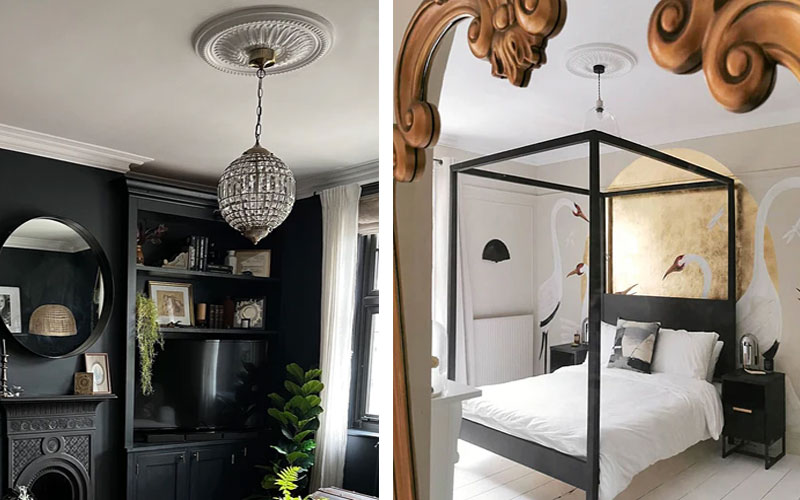Ceiling roses have symbolized sophistication in interior design for centuries. It showcases timeless elegance and intricate details. Plaster is a top choice among various materials used to craft ceiling roses. Its versatility, intricate designs, and seamless integration with different architectural styles make it a preferred option.
This comprehensive guide will delve into the art and craft of plaster ceiling roses. Also, this explores their history, design options, installation, and maintenance to help elevate your living space’s aesthetics.
The Historical Significance of Plaster Ceiling Roses
Plaster Ceiling Rose has a fascinating history. This stretches back to ancient times. Imagine ancient palaces, temples, and grand estates. These places are adorned with these elaborate and beautiful designs. The Romans and Greeks were among the first to use plaster to create decorative ceilings.
But it was during the Renaissance in Europe that plasterwork indeed became an art form. Skilled artists and artisans took plaster to new heights. They crafted intricate designs for ceilings. Plaster ceiling roses became a symbol of wealth. This also became prestigious during this period of history.
The Craftsmanship and Design Options
Creating plaster ceiling roses is a meticulous art. This demands skill, precision, and a keen eye for design. Plaster is a versatile and sturdy material. Also, this offers the opportunity for intricate detailing and personalized customization.
This makes it an ideal medium for creating ornamental features like ceiling roses. Skilled artisans carefully mold plaster into a plethora of designs. This ranges from simple and understated to intricately detailed and elaborate. Here are the design elements:
1. Floral Patterns
Floral patterns, drawing inspiration from the beauty of nature, stand as one of the most favored choices in plaster ceiling roses. These designs manifest the intricate artistry that mimics flowers’ grace and elegance, such as roses, lilies, and various other blooms.
2. Geometric Shapes
Clean lines and geometric shapes offer a modern and minimalist aesthetic. This makes them suitable for contemporary interior designs.
3. Baroque and Rococo Styles
Elaborate and ornate designs from the Baroque and Rococo eras often include intricate detailing and lavish embellishments. This showcases opulence and grandeur.
4. Art Deco Influences
Art Deco-inspired designs stand out for their bold geometric shapes. Also, sharp lines and a sense of glamorous flair. These features make them a distinct and visually captivating option.
5. Victorian Elegance
Ceiling roses in the Victorian style often showcase a combination of floral patterns, leaves, and elegant scrolls. These elements come together to create a timeless and classy aesthetic. This radiates a sense of classic elegance.
Customization
Customizing plaster ceiling roses is essential in achieving a seamless integration with your personal taste and interior decor. The ability to modify elements such as size, shape, and design intricacy offers a wide range of options for tailoring these ornate fixtures.
This level of flexibility allows homeowners to create a distinctive and personalized statement piece, ensuring that their ceiling rose aligns perfectly with the overall aesthetic of their living space. Installing a plaster ceiling rose demands precision and thorough planning to achieve the desired effect. Follow this step-by-step guide for a successful installation:
- Ensure that the ceiling is clean, free of any dust or debris, and, of course, dry.
- Mark the center of the ceiling to position the ceiling rose accurately.
- Measure the dimensions of the plaster ceiling rose and mark the desired position on the ceiling.
- Check the alignment and adjust to ensure the plaster ceiling rose is perfectly centered and symmetrical.
- Apply a suitable adhesive, like plasterboard adhesive, ensuring an even coat on the back of the plaster ceiling rose.
- Carefully position the plaster ceiling rose on the ceiling, aligning it with the marked position.
- Press the rose gently to secure it in place and ensure it adheres to the ceiling.
- Add additional plaster to remove any edges or gaps between the rose and the ceiling.
- Allow sufficient drying time for the adhesive and any additional plaster used.
Maintenance and Care
Proper maintenance is essential to preserve the beauty and longevity of plaster ceiling roses. Here are some tips to maintain and care for these exquisite decorative elements:
- Regular Dusting
- Avoid Water Exposure
- Avoid Harsh Cleaning Products
- Inspect for Damage
- Consult a Professional
The Timeless Beauty and Versatility of Plaster Ceiling Roses
Plaster ceiling roses have stood the test of time as a design choice. This imparts a sense of refinement and aesthetic appeal to any space. They have a fascinating history and come in various styles. This makes them a versatile way to boost the classy look of your interiors.
When you grasp the artistry, design options, how to install, and what it takes to keep them in top shape, you’ll feel more at ease bringing these gorgeous decorative elements into your home. They can help craft an environment of ageless grace and loveliness.











